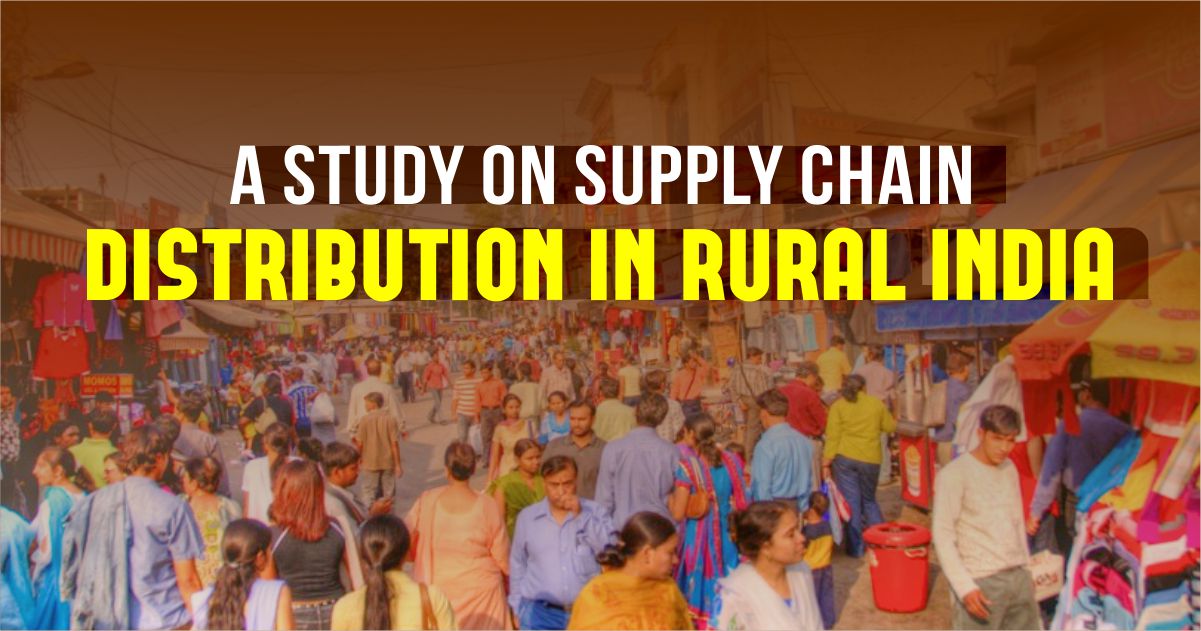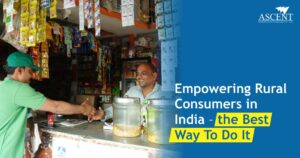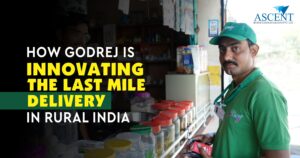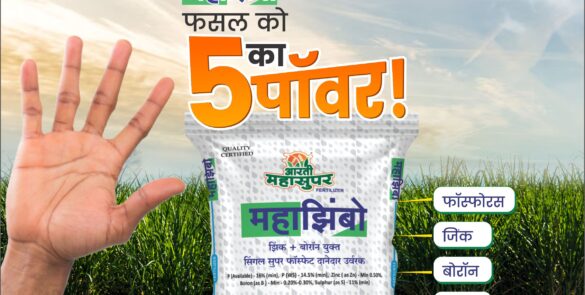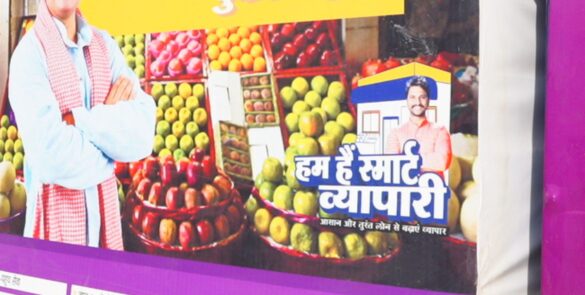Introduction
There is a massive opportunity for the brands to connect rural retailers and rural customers as 70% of human settlements belong to rural whereas 30% belong to urban cities.
There are very few FMCG companies such as HUL and Dabur that have penetrated such areas. With the advent of ICT and its accessibility in rural areas, the small players and startups are directing their investments and production, keeping the rural population in mind. More than 100 agri-startups have come up to provide services such as farm equipment and agri- inputs like seeds, chemicals, and fertilizers in recent years. The market analysts devise different distribution strategies to penetrate rural areas and compete with the local and regional brands.
Source: Mint Website (Latest census data)
Although earlier affordability and lack of public infrastructure were a concern, the companies and brands were apprehensive about providing services in such areas. Still, with government intervention of different initiatives and schemes and various policy-led support, the rural people can save and aspire for a better standard of living.
In the pie chart given below, we can see that in 2018, 55% of rural expenditure was from rural areas. The income levels and quality of infrastructure are comparatively lower than the urban, which stand at 45% in terms of retail expenditure.
Source: Store King
Evolution of supply chain distribution in rural
The rural consumers are highly aspirational as they seek new consumer experiences through innovative applications and enabling access to technology in rural areas. The 4 A’s of rural marketing revolves around acceptance, availability, awareness, and affordability. The limitations of the rural market mostly incur on the part of availability and affordability.
To solve the concept of supply chain management issue, different companies and organizations are shifting their operation using digital technology where registration, payment services, inventory, and transparency of dealerships can be managed efficiently. The accessibility of telecom services is one of the essential factors in catering to the needs of rural retailers. So let’s find out whether the internet is a critical facility in rural India. Below bar graph shows the increasing internet penetration in urban and rural areas.
Source: NIKKEI ASIA article (numbers in millions)
From the above bar chart, we can see that rural internet consumers should have increased by 154%. Urban internet users have also increased by a small percentage compared to rural. Hence, looking at the trend from 2017 to 2021, the scope of improving the value chain services in rural areas has more potential than the urban.
Gaps and challenges of supply chain management in rural areas
This process is a linear network where customers purchase the products from the retail shops; a retailer has to purchase products from the wholesalers and the wholesaler from the manufacturer. The supply chain accounts for 60-90 % of all costs incurred by a company to mobilize the product. A 2 % improvement in all the functions of the supply chain management process has an enormous impact on other internal expenditures of the company. The following factors are reasons for inefficient supply chain networks abstaining reachability and convenience.
- The limited reach of global manufactured products
- More concentration on agricultural activities
- Lack of roads and channels for effective sales and distribution management of goods and services
- Monopolistic policies of regional and local players
- Influence of social norms on the individuals
- Less retail outlet per sq. km
In rural areas, there is high demand for smaller SKUs which increases the cost of transportation and packaging. One of the major problems is the inability to forecast customer demand which affects inventory orders. The other external factors attached to supply chain issues are robbery, leakage, or damage while unloading. Another issue from the supply side is that in India, there are a lot of check posts, and heavy vehicles like trucks have to wait for long hours to cross the check post. In addition, 83% of rural consumers travel to distant areas (approximately > 20km) to make more significant purchases. All these factors contribute to the adverse effect of low-quality products being consumed in the rural pockets of our country.
Potential steps to address the supply chain issues
a) Kirana stores and Brands
To devise an e-retail strategy in rural India, there needs to be an understanding of the different customers in the region. According to a report by Accenture, rural consumers are aspirational, seek value for money, and are connected. More than 50% of rural customers are willing to use digital mediums to purchase the products. Hence, the entire mechanism of the network could be digitized. The Kirana stores can be empowered by decreasing their dependency on wholesale channels. The presence of wholesalers and intermediaries limits the brand’s connection with the retail establishments.
With virtual supermarkets, it offers a catalog of a wide range of products in their stores. The customers and retailers can go online and access the services present in the catalog. The challenge that an application faces are how to make it user-friendly. Most applications use the English language as a mode of instruction. With the inception of cheap internet and smartphones, the agriculture companies viewed its potential to expand resources in the rural areas; hence, many agri applications are catering their services in the local language to make the customer or retailer experience convenient.
The same goes for durable consumer products and FMCG companies. These companies seek opportunities to penetrate the rural market. Contacting retailers to purchase the shelf for their products has always been necessary for any manufacturer. The rural retailers can source their products from different wholesalers, The brand competitiveness will be increased, and the quality of the products could be ensured.
The brands can also come up with discounts and offers based on different local festivals, attracting rural customers. For a more customized experience, e- retail applications or websites can send a letter of gratitude in the local language to improve their experience.
b) Integration of infrastructure and technology
Managing supply chains is a huge issue for any establishment because of business practices, government regulations, engineering capabilities, transportation, and infrastructure. The optimized way to address these issues is to integrate IT with supply chain and logistics, which can customize the requirements of different retailers, and the improvement of infrastructures like roads and storehouses can make transportation convenient.
The government needs to focus on efficient roads, the importance of distribution channels; the retailers and SCM companies should come together to construct production and distribution centers, consolidate and scale up distribution at lower costs, and prepare cold storage facilities to reduce the wastage of various commodities and digitize the transactions, orders, product shipping details, and order inventory to maintain transparency and accountability. This will help the retailers to bypass different mediums of striking deals with the wholesalers or manufacturers.
Source: StoreKing website
The mechanism should function similar to a food delivery application or an Amazon delivery for the rural retailers. They can seamlessly order their required product without moving and hopping to different locations. The network, instead of linear, should be more like a double star with the SCM companies at the center.
c) IRSN (Integrated Rural Supply Network)
As per the ISB Insight research article, Rural Supply Chain Network: The Future, the author talks about the four core delivery processes that need to be coordinated to function correctly. The business processes in the rural framework are as follows:
Production of farming and non-farming inputs (agriculture, pisciculture, dairy)
Procurement of farming and non-farming inputs
Processing (processing of the produce)
Retailing (rural and urban retailing)
The support activities that would help function the business process coherently are mobile communication technology, transportation, packaging, and financial services. These support activities are imperative to make the entire process work concurrently.
Integrated Rural Supply Network diagrammatic representation (Idea taken from the paper)
d) Orchestrator Network
The orchestrator model is a highly used model among MNCs. An orchestrator pools customers’ leads and their requirements and simultaneously monitor the production activity to maintain the balance between demand and supply. The rural manufacturers can adopt this model, and small manufacturing enterprises can manage the pertinent services like finances, logistics, and resources. It has the scope of opportunity both for domestic and export markets.
Retailing in India
There are about 12 million retail outlets in India with 21 million workforces with no big players as competitors. Although the organized retail structure is shallow in India, it has tremendous scope and market potential in India’s rural and urban regions. So the priority for this segment is to develop rural and urban supply chains and integrate them into the global value chain. Rural supply chains are a big issue in India. Urban settlements are congested, and the market potential is also saturated.
Hence, there is a need for transformation in the product, process, business models, and service models to provide scalability and markets for commodity supply chains to thrive. In India, there are attempts to connect the local stakeholders through messaging, wireless phones, internet, and kiosks, but these attempts are just supplies for information rather than the actual commodity network. The network logistics are blamed for bad roads, lack of cold chain, and transport methods like bullocks and tractors. The aim should be to have an organized supply chain with the help of the internet and other technologies.
There are possible scopes with the existing resources, such as the ubiquitous presence of post offices. As per the research excerpts taken from IISC Bangalore, the rural retail group can place an order with the call center via the post office, further connecting with the state distribution center. The state distribution center would pass the order details to the local wholesalers near the village. The orders could be procured and delivered to the post office, further delivering the goods to the local retailer group.
Source: IISC Bangalore research paper
Companies venturing into the e-retail space
Many companies and NGOs working in rural areas collaborate with e-commerce websites to facilitate services in rural locations. For example, the Hindrise Foundation is associated with e-commerce to increase the accessibility of services. GSK India is connecting with rural registered practitioners and chemists in rural areas to educate them about the product to drive its growth of the product. Store king partners with Amazon, where the orders are shipped to the shops; the customers try and test the products and return if unsatisfied with the product.
In this arrangement, the products do not go directly to the end consumer allowing both the stakeholders to avoid expensive deliveries. The big company Amazon pays a commission to Store king for generating leads. However, Store King mainly operates in the southern peninsula of India. Let’s look at the annual revenue of this innovative venture from 2012 to 2018.
Souce: NIKKEI Asia article
A company similar to Store King is NearSt. It has a mobile e-commerce application that boosts in-store sales by getting inventory in front of 1000 local customers. It automatically connects in-store products to the people searching nearby and sends them to local stores. Its operation is mainly in the UK.
During the pandemic, the customer’s shopping behavior has shifted to online. The company has also ventured into facilitating brick-and-mortar stores and helping the physical retailers. Hence this technology is helping the customers to realize that purchasing products from local vendors is often faster than purchasing them from Amazon. In 2020, the company’s revenue became 2.2 million Euros.
In India, the above example reveals potential retailers in the rural areas who are ready to accommodate such technologies, which can drive their business growth. Even though there has not been much competition from companies like Store King, which has ventured into the rural retailing space, so, the future scope of penetrating and collaborating with rural retailers can make an efficient business model.
Udaan: Online B2B for retailers
This company has developed a platform that is designed for small and medium-sized businesses to connect with traders, wholesalers, retailers, manufacturers, and brands in India. This application catalogs a wide range of products in its portal, facilitates the users’ credit facility and makes doorstep delivery of the orders purchased with a cashless payment option.
It enables the users to track their orders during the entire phase of supply chain distribution. Udaan has over 3 million users and more than 30000 sellers on the platform, with 1.7 million products curated across different brands. It delivers 1.5-1.7 lakh orders daily with its current warehousing capacity of 200 numbers over 10 million sq feet. The business is committed to adapting quickly to challenges and managing its supply chain through disruptions.
Shop Kirana:
Shop Kirana is a B2B commerce focused on technology and supply chain innovation to empower retailers with digitization, ease of operational expertise, and scalability. Its idea is to partner with retailers giving them to expand their demand-side service and reach to market with transparency and market intelligence. It also connects with brands to source their products directly from the retailers. The business mainly provides its services in the cities. Still, it can expand its operation in rural areas with its existing digital resources.
Case Study 1: Supply Chain Distribution of HUL
HUL is India’s largest FMCG company, with over 700 million consumers. There are more than 15000 employees, including 13000 managers. Its products are primarily personal care, laundry, skincare, haircare, oral care, deodorants, cosmetic and ayurvedic products.
HUL consists of more than 100 manufacturing plants. There are about 2000 suppliers as a resource of raw materials and intermediaries for packaging materials. It consists of more than 40 agents, 7500 wholesalers, and several institutional customers. It consists of 7000 redistribution centers covering about 1 million retail outlets.
HUL’s supply chain and distribution network
It also makes use of an IT-based sales system.
Every salesman books orders on a palm top. Here it records orders from retail outlets and records closing stocks in the outlet for HUL products. It prompts the salesman on SKUs that could be sold to the outlets and advises the quantity from the past data.
All the orders are fed into a central database from the distributor point. The network is installed at all distributor points, making for on-the-fly demand projection and helping the stock out losses.
The company has brought all markets with a population below 50000 under one rural sales organization. The network directly covers about 50000 villages in rural India, reaching 250 million consumers. It undertook a project known as Project Shakti with partnerships of Self-help groups of rural women covering about 5000 villages in 52 districts in different states. The SHGs are getting support from various NGOs for their sales training. They have chosen to adopt the distribution of HUL’s product as a business venture.
Also Check Out The Innovative Last Mile Delivery Process of FMCG major Godrej
Case Study 2: Supply Chain Distribution of Bajaj Electricals
Bajaj Electricals Limited is an Indian consumer manufacturing company. Bajaj Electricals has 20 branch offices spread in different parts of the country. Besides being supported by a chain of distributors, authorized dealers, retail outlets, exclusive showrooms called ‘Bajaj World’, and approximately 500 customer care centers are dominant players in the Indian market. Bajaj Industries is spread across different products and services other than electricals, including automobiles, financial services, and home appliances.
Bajaj follows an AAA supply chain rule which means agility, adaptability, and alignment to make their products available.
Agility: It responds to short-term changes in demand and supply quickly and handles external disruptions smoothly. It involves the flow of information with suppliers and customers, collaborative relationships with customers, design for postponement, inventory buffers, and contingency plans.
Adaptability: It adjusts supply chain design to meet the market needs. It modifies the supply chain network by working upon products, strategies, and technologies. This process involves a constant search for new supply bases and markets, evaluates the requirements of the end and intermediary customers, makes flexible products, and determines the product life cycle.
Alignment: It aligns the interest of all the firms in the supply chain. The process involves exchanging information and knowledge with vendors and customers, partners with vendors, and sharing resources, risks, costs, and gains of improvement initiatives.
Supply chain distribution of Bajaj Electricals Ltd
Case Study 3: Supply Chain Distribution of Agriculture commodities
The agriculture sector has a vast consumer base and an extensive raw materials base. Supply chain management describes the relationship between the businesses responsible for efficient production and supply of agribusiness products from the farm level to consumers to meet the consumer’s quality, quantity, and price requirements.
The traditional supply chain network in India is linear in nature.
This procurement process from farmers to wholesalers is highly unorganized. The farmers are neglected of the fair price as there are a lot of intermediaries involved in the process, making the system monopolized and incurring high transaction costs. The decisions on quality and price are highly arbitrary. The problems in the entire structure encompass poor infrastructure, underexposure to organized logistics, absence of adequate warehouses, sheltered warehouses, cold storage facilities, and inaccessibility to financial support and market.
Prospects of addressing these issues are by encouraging the third party players, warehousing the public-private partnerships, and enabling the farmers by strengthening the information system, government policies, skill development, and training institutions.
Though digitization is a new way of procuring farm produce, and it involves a tiny segment of farmers using such services, it has the potential to be acceptable with the right kind of rural marketing strategies. The digital network can alleviate the challenges posed by the intermediaries and help the farmers to achieve a fair price for their commodities. Many applications developed by the agri-startups like Plantix, Agrostar, Krishi Network, and Krishi Hub have come up with different additional features like crop advisory, weather forecast, and suggestions on crop diseases enabling the farmers to make the right choices for their crops.
This application also facilitates farmers to purchase agri-inputs seeds, fertilizers, farm implements, and organic products. These companies empower the farmers to connect with other farmers, traders, and wholesalers, bypassing the intermediaries in the linear chain network.
Information system based supply chain for agri- commodities
Conclusion
Focusing on correct strategies and building enterprises around supply chains could give a good employment opportunity to people as it would solve a massive problem of rural supply chain networks. The companies and brands should also exercise product design and marketing at affordable prices with increased reachability in rural places.
With this, not only could the popular brands get the accessibility to the rural market, but also the rural brands could expand their market into the urban areas, posing competition to the urban brands. The future opportunity lies in the supply chain management sector in rural areas. We think it would be beneficial for the emerging startups to find possible solutions to link the rural and urban connectivity without intermediaries and many hassles.

